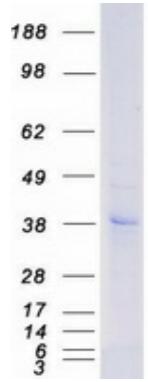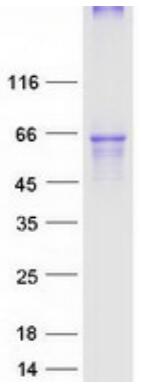GPCRs Class A
🧪 RFL9359HF
Source: E.coli
Species: Human
Tag: His
Conjugation:
Protein Length: Full Length (1-377)

🧪 RFL10923PF
Source: E.coli
Species: Pongo Abelii
Tag: His
Conjugation:
Protein Length: Full Length (1-460)

🧪 RFL29274CF
Source: E.coli
Species: Guinea pig
Tag: His
Conjugation:
Protein Length: Full Length (1-450)

🧪 RFL8429CF
Source: E.coli
Species: Guinea pig
Tag: His
Conjugation:
Protein Length: Full Length (1-455)

🧪 RFL31657CF
Source: E.coli
Species: Guinea pig
Tag: His
Conjugation:
Protein Length: Full Length (1-351)

🧪 RFL32181MF
Source: E.coli
Species: Mouse
Tag: His
Conjugation:
Protein Length: Full Length (1-319)

🧪 RFL15623CF
Source: E.coli
Species: Guinea pig
Tag: His
Conjugation:
Protein Length: Full Length (1-448)

🧪 RFL7946MF
Source: E.coli
Species: Mouse
Tag: His
Conjugation:
Protein Length: Full Length (1-374)

🧪 RFL28862RF
Source: E.coli
Species: Rat
Tag: His
Conjugation:
Protein Length: Full Length (1-160)

🧪 C5AR1-348HFL
Source: Mammalian Cells
Species: Human
Tag: Flag
Conjugation:
Protein Length:

🧪 P2RY12-590HFL
Source: Mammalian Cells
Species: Human
Tag: Flag
Conjugation:
Protein Length:

🧪 MTNR1A-1482HFL
Source: Mammalian Cells
Species: Human
Tag: Flag
Conjugation:
Protein Length:

🧪 RFL29094SF
Source: E.coli
Species: Sus scrofa (Pig)
Tag: His
Conjugation:
Protein Length: Full Length (1-373)

🧪 RFL3870PF
Source: E.coli
Species: Pan troglodytes
Tag: His
Conjugation:
Protein Length: Full Length (1-339)

Class A GPCRs are the largest and most varied group, making up about 48% of all GPCR receptors. This class includes receptors for light, like rhodopsin, as well as key neurotransmitter receptors for dopamine and serotonin, and hormone receptors, such as adrenergic receptors. What sets Class A apart is its structure: these receptors have a short N-terminus and a specific Asp-Arg-Tyr (DRY) motif in their third transmembrane segment, which plays a crucial role in activating G-proteins. By focusing on Class A and its essential functions, we support research and innovation in areas spanning vision, mental health, and hormone-related processes.


